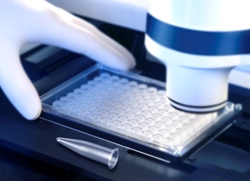Many people have concerns on the advance on technologies and how it will impact our environment in the near future - but have they taken a closer look on how major opportunities which will arise in the health sector in the future. This advances and development of medical technology has been able to care treatment as well as save lives, worldwide. So, exactly how important is technology? So important!
 Taking a closer look at a artificial pacemaker we see how technology has evolved and now plays a significant part of individuals life. A artificial pacemaker is a medical device which uses electrical impulses, delivered by electrodes contacting the heart muscles, to regulate the beating of the heart.The primary purpose of a pacemaker is to maintain an adequate heart rate, either because the heart's native pacemaker is not fast enough, or there is a block in the heart's electrical conduction system. It is evident that technology has expanded since there are different methods of pacing for an artificial pacemaker (Medline Plus). These include: Percussive pacing, also known as Transthoracic, Transcutaneous pacing, also called external pacing, Epicardial pacing, Transvenous pacing, and permanent pacing (Heart Wellness Store). Without the technology of the artificial pacemaker, many peoples life would be at risk. Technology has advanced to the point in which pacemakers now incorporate defibrillators. So, many may ask, “how many people in the world have a pace makers?” The answer is that the number exceeds 2 million. There are 300,000 implants each year all over the world, some of which are replacements (Facts About Advances in Medical Technology).
Taking a closer look at a artificial pacemaker we see how technology has evolved and now plays a significant part of individuals life. A artificial pacemaker is a medical device which uses electrical impulses, delivered by electrodes contacting the heart muscles, to regulate the beating of the heart.The primary purpose of a pacemaker is to maintain an adequate heart rate, either because the heart's native pacemaker is not fast enough, or there is a block in the heart's electrical conduction system. It is evident that technology has expanded since there are different methods of pacing for an artificial pacemaker (Medline Plus). These include: Percussive pacing, also known as Transthoracic, Transcutaneous pacing, also called external pacing, Epicardial pacing, Transvenous pacing, and permanent pacing (Heart Wellness Store). Without the technology of the artificial pacemaker, many peoples life would be at risk. Technology has advanced to the point in which pacemakers now incorporate defibrillators. So, many may ask, “how many people in the world have a pace makers?” The answer is that the number exceeds 2 million. There are 300,000 implants each year all over the world, some of which are replacements (Facts About Advances in Medical Technology).As medical technology continues to grow on many levels, the future of medical technology seems bright. With a view for scientists to continue to discover cures for cancer, blindness, disability and disease prevention, medical technology will continue to provide the world with a healthier future.Another example would be X-rays. (About X-rays). X-rays is a form of electromagnetic radiation. They have a wavelength in the rage of 0.01 to 10 nanometers. X-rays are important because they are a noninvasive way to examine the internal parts of the body. They are also used to treat certain forms of cancer. X-rays are used to determine hairline fractures or major breaks in bones. They are also used to view the heart and other internal organs for abnormalities, such as the brain, blocked blood vessels and the lungs. X-rays are also involved in dental care; it allows dentists to look for cavities and to diagnose root canals and other periodontal or gum diseases.
I personally think that technology is a huge aspect in todays society, not only because it provides us with social networking but because technology is capable of saving the lives of many individuals and within time, it will be the answer to many of the medical issues today. A simple form of technology that is seen often is the use computerization of medical records (Electronic Design). Electronic medical records have made information more accessible and more accurate. Now, instead of sifting through seemingly endless shelves of folders and papers, one can simply look up patient information in a neat electronic database, and in critical medical situations, this can save valuable time. Technology is involved to find the cure of health issues. We see that technology is responsible for diagnosing patients, which allows doctors to provide help to them. MRI, NMRI, or MRT is a useful machine that can help detect brain tumours, or such. Technology is no doubt is an important part of out everyday life and such a broad term that its contribution to our understanding of internal body system is indescribable!
Works Cited
- Design, Electronic. "Medical Electronics: Technology Advances Will Revolutionize Healthcare." Electronic Design Home Page. Web. 07 Apr. 2011. <http://electronicdesign.com/article/articles/medical-electronics-technology-advances-will-revol.aspx>.
- NASA Official: Ruth Netting. "X-rays." X-rays. Nasa Gov. Web. <http://science.hq.nasa.gov/kids/imagers/ems/xrays.html>.
- New Medical Technology: Lifesaving and Life-Enhancing | Reader's Digest Version." Health Tips, Food and Recipes, Funny Jokes and Cartoons, and Sweepstakes | Reader’s Digest Version. Web. 07 Apr. 2011. <http://www.rd.com/health/new-medical-technology-lifesaving-and-life-enhancing/>.
- Burdett, Jennifer. "Facts About Advances in Medical Technology | EHow.com." EHow | How to Videos, Articles & More - Trusted Advice for the Curious Life | EHow.com. Web. 07 Apr. 2011. <http://www.ehow.com/about_5564827_advances-medical-technology.html>.
- "ABOUT X-RAYS." ACRIN HOME. Web. 07 Apr. 2011. <http://www.acrin.org/PATIENTS/ABOUTIMAGINGEXAMSANDAGENTS/ABOUTXRAYS.aspx>.


1 comments:
Vilma! You're introduction was very captivating! I know that when I think of technology, I think of how many negative impacts it has on our society and how we let it take over our lives, but there's so much more to it! Society may be dependent on technology but when it comes to medicine, technology is a great help, things are faster and way more basic then they would've been twenty years ago. Anyways, wonderful blog, I enjoyed reading it!
Post a Comment